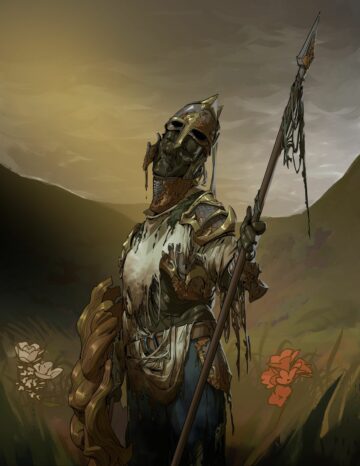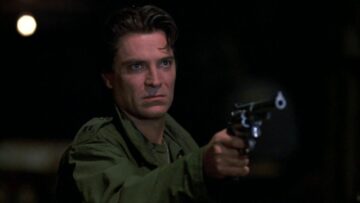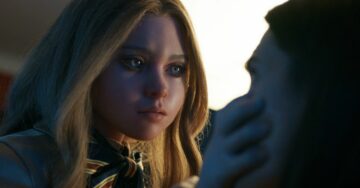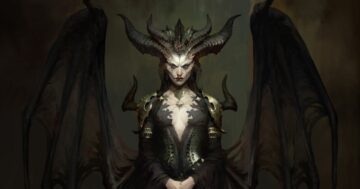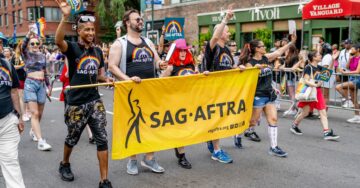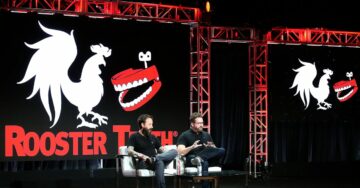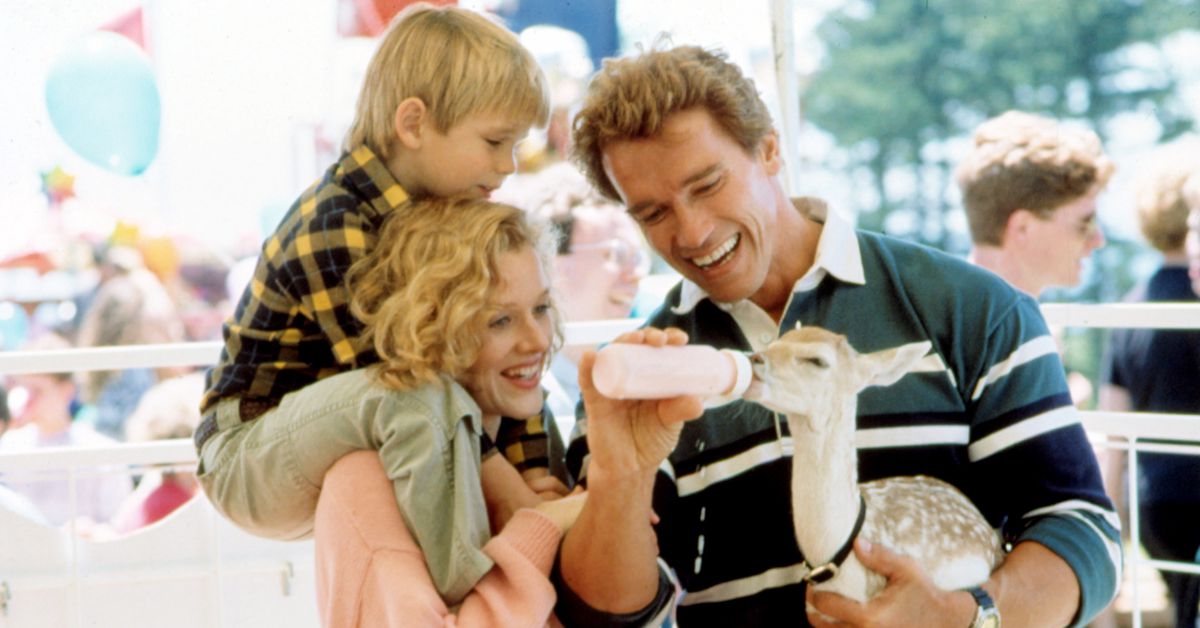
Playing the original Silent Hill for the first time back in 1999, many of its influences were immediately apparent: Adrian Lyne’s psychological horror movie Jacob’s Ladder and adaptation of Lolita; William Peter Blatty’s The Exorcist 3; Stanley Kubrick’s The Shining; the sci-fi and horror works of Ray Bradbury, Stephen King (aka Richard Bachman), and Dean Koontz.
It wasn’t until the following decade that hardcore Silent Hill fans uncovered the undeniable influence of Ivan Reitman and Arnold Schwarzenegger’s comedy movie Kindergarten Cop on the design and architecture of the game. That may be the strangest revelation about Team Silent’s groundbreaking horror title, more so than any bizarre UFO or shiba inu-related secret ending in the franchise.
The biggest reference is with Silent Hill’s Midwich Elementary School — which pulls its name from Village of the Damned. It’s directly based on the school from Kindergarten Cop, as the below video thoroughly illustrates. (In the movie, it’s called Astoria Elementary, but it’s a real-world grade school named John Jacob Astor Elementary.)
[embedded content]
The Silent Hill development team turned to Kindergarten Cop, released in 1990, to give their game an authentic small-town American feel, from the yellow school busses to the posters that decorate the school hallways. Some argue the influences go deeper, like that Silent Hill’s protagonist Harry Mason is dressed similarly enough to Schwarzenegger’s John Kimble. Both are stories about missing children, and both happily end with the male lead becoming a new father figure.
I choose to believe another truth. Someone on the team just really likes Kindergarten Cop, a very strange and tonally chaotic movie, and wanted to give Reitman’s highest-rated Schwarzenegger vehicle (above Junior and Twins) its due props.
Silent Hill is, after all, a love letter to the team’s influences. The in-game map is filled with streets named after genre writers like James Ellroy, Carl Sagan, Robert Bloch, Michael Crichton, and Richard Matheson. In-game newspapers reference The Silence of the Lambs serial killer Buffalo Bill. Four teachers at Midwich Elementary are named after the members of Sonic Youth. One of the town’s bridges is named after Genesis P-Orridge of Psychic TV and Throbbing Gristle fame. Even the strange UFO endings now read as homage.
Silent Hill writer Hiroyuki Owaku would later carry those Lynchian influences into Silent Hill 2, which features a scene ripped from Blue Velvet, with Pyramid Head standing in for Frank Booth. Later games would reference the Silent Hill games themselves, with Silent Hill 3 looping back on Harry Mason’s story and Silent Hill 4: The Room, connecting back to minor characters in 2 and 3. Almost every game in the franchise would also implement its own version of the comedic UFO ending.
In a 2013 Famitsu interview, Silent Hill director Keiichiro Toyama talked about what influenced him in designing the original game.
“I never liked the really bloody shock-fest sort of horror film, so I was kind of at a loss when we started out,” Toyama said. “What I am a fan of is occult stuff and UFO stories and so on; that and I had watched a lot of David Lynch films. So it was really a matter of me taking what was on my shelves and taking the more horror-oriented aspects of what I found. I really didn’t think [Silent Hill] was that much of a horror game, and it was kind of a surprise to me when people told me it was scary after it came out!”
Thankfully, for self-professed scaredy-cats like Toyama, that horror can be numbed somewhat when you re-imagine Silent Hill as just a nightmare in the world of Kindergarten Cop.
- SEO Powered Content & PR Distribution. Get Amplified Today.
- PlatoData.Network Vertical Generative Ai. Empower Yourself. Access Here.
- PlatoAiStream. Web3 Intelligence. Knowledge Amplified. Access Here.
- PlatoESG. Carbon, CleanTech, Energy, Environment, Solar, Waste Management. Access Here.
- PlatoHealth. Biotech and Clinical Trials Intelligence. Access Here.
- Source: https://www.polygon.com/gaming/24081234/silent-hill-kindergarten-cop
- :is
- 1999
- 4
- a
- About
- above
- adaptation
- adrian
- After
- aka
- All
- almost
- also
- am
- American
- an
- and
- Another
- any
- apparent
- architecture
- ARE
- argue
- AS
- aspects
- At
- Authentic
- back
- based
- BE
- becoming
- believe
- below
- Biggest
- Bill
- Bloody
- both
- bridges
- Buffalo
- but
- called
- came
- CAN
- Carl
- carry
- characters
- Children
- Choose
- Comedy
- Connecting
- content
- David
- decade
- deeper
- Design
- designing
- Development
- development team
- directly
- Director
- due
- elementary
- embedded
- end
- ending
- enough
- Even
- Every
- FAME
- Famitsu
- fan
- Features
- feel
- Figure
- filled
- Film
- films
- First
- first time
- following
- For
- found
- four
- Franchise
- frank
- from
- game
- Games
- Genesis
- genre
- get
- Give
- Go
- grade
- groundbreaking
- had
- head
- him
- homage
- horror
- HTTPS
- i
- I’LL
- illustrates
- immediately
- implement
- in
- in-game
- influence
- influenced
- into
- IT
- ITS
- ivan
- jacob
- james
- John
- jpg
- just
- killer
- Kind
- King
- later
- lead
- letter
- like
- likes
- loss
- Lot
- love
- lynch
- male
- many
- map
- Mason
- Matter
- May..
- me
- Members
- Michael
- minor
- missing
- more
- movie
- much
- my
- name
- Named
- never
- New
- Newspapers
- no
- now
- of
- on
- ONE
- or
- original
- out
- over
- own
- People
- Peter
- PHP
- plato
- Plato Data Intelligence
- PlatoData
- Polygon
- posters
- protagonist
- psychological
- Pulls
- Pyramid
- RAY
- Read
- really
- reference
- released
- revelation
- Richard
- ripped
- ROBERT
- Said
- scene
- School
- sci-fi
- Secret
- serial
- shelves
- Shiba
- shining
- Silence
- Silent Hill
- Similarly
- So
- some
- Someone
- somewhat
- sort
- standing
- stanley
- started
- Stephen
- Stories
- Story
- strange
- streets
- stuff
- surprise
- taking
- talked
- teachers
- team
- than
- that
- The
- the world
- their
- themselves
- Think
- thoroughly
- those
- time
- Title
- to
- told
- truth
- Turned
- tv
- ufo
- uncovered
- undeniable
- until
- vehicle
- version
- very
- Video
- wanted
- was
- we
- were
- What
- when
- which
- william
- with
- works
- world
- would
- writer
- writers
- yellow
- you
- youth
- youtube
- zephyrnet

